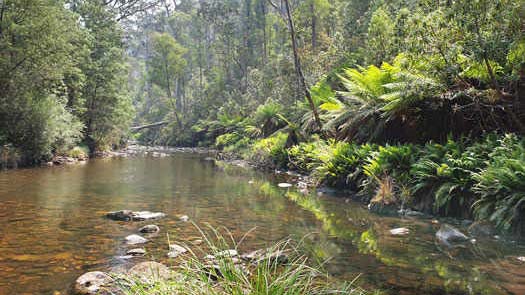Australian Alps
Key flora and fauna of Mt Kosciuszko and Upper Murray

Eucalyptus dominate the landscapes of the lower western slopes all the way up to the snow line with the exception of some high alpine frost hollows. These contain both dry and open woodlands that get wetter and thicker as the altitude increases.
Savanna (open canopy) woodlands of mixed eucalypts are common in areas below 1,100 m. Yellow Box (Eucalyptus melliodora dry) & Blakely's Red Gum (E. blakelyi moist) are commonly found growing together, as are Candlebark (E. rubida dry) & Manna Gum (E. viminalis moist) associations.
Other dry species include:
Other moist species include:
Fern communities are common beside rivers and moist gullies in the wet forests of the upper slopes and lower alpine regions. Soft Tree Ferns (Dicksonia antarctica) and many smaller species such as Mother Shield-Fern (Polystichum proliferum) are common, along with other moisture loving plants such as Blackwood (Acacia melanoxylon) and Leptospermum species.
Other species often found include:
©2025 Alan Davison // Credit // Disclaimer